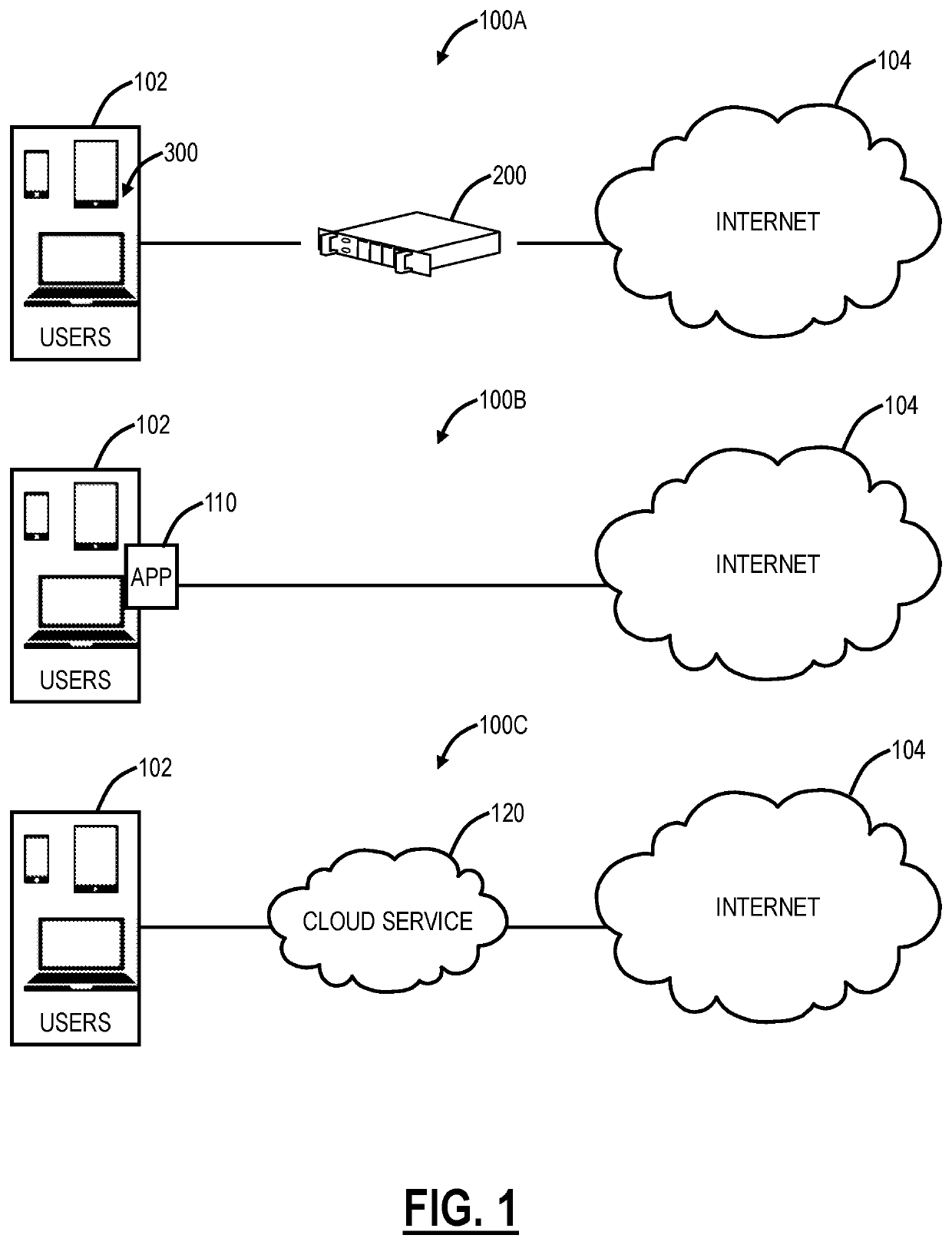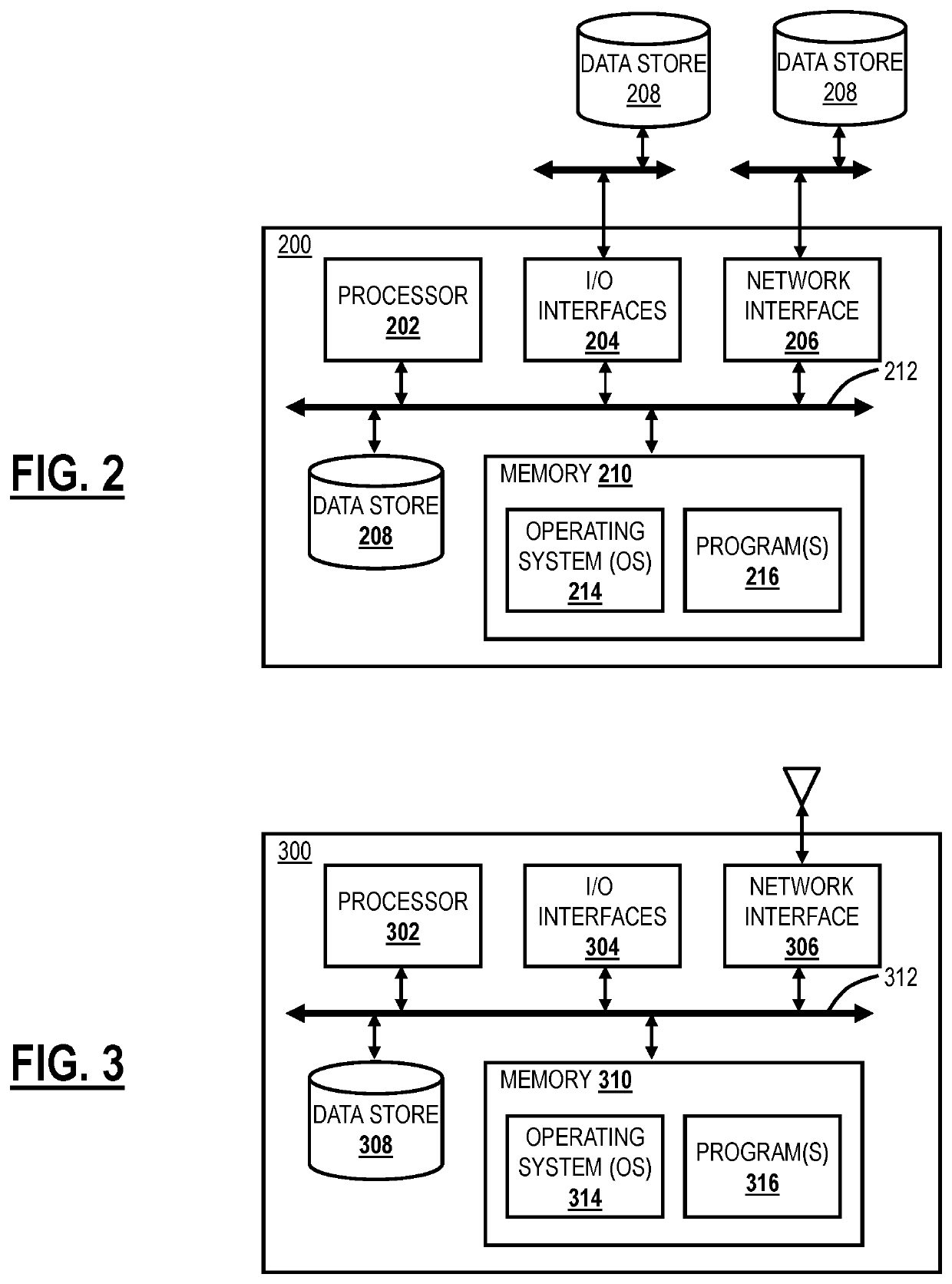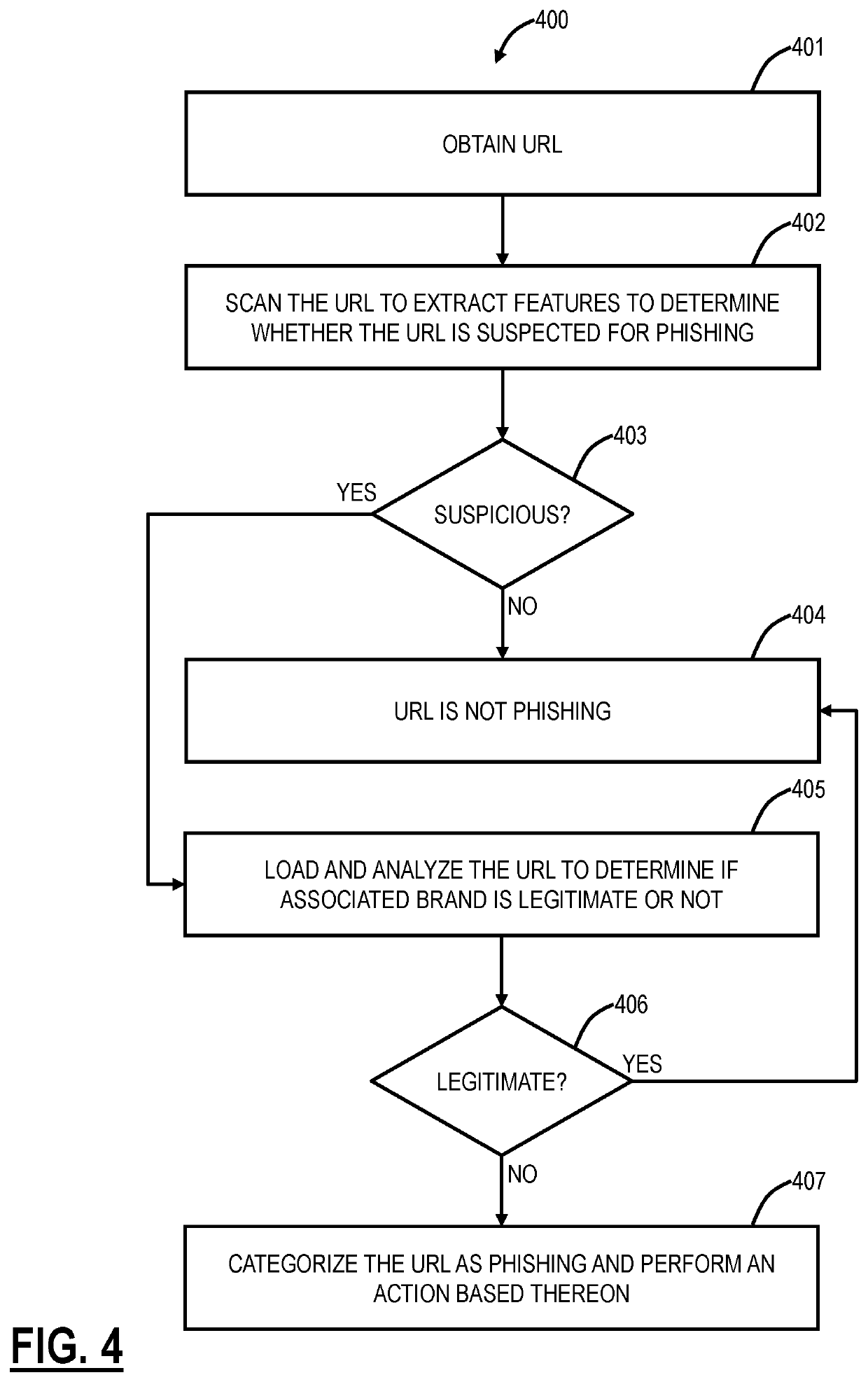Phishing detection of uncategorized URLs using heuristics and scanning
a technology of uncategorized urls and phishing detection, applied in the field of network and computing, can solve the problems of malicious actors, malicious entities are ever evolving, and no longer effective for their malicious goals, and achieve the effect of quick, accurate, and efficient categorizing a suspect url
- Summary
- Abstract
- Description
- Claims
- Application Information
AI Technical Summary
Benefits of technology
Problems solved by technology
Method used
Image
Examples
Embodiment Construction
lass="d_n">[0014]Again, the present disclosure relates to systems and methods of phishing detection of uncategorized Uniform Resource Locators (URLs) using heuristics and scanning. The phishing detection can detect if a URL is a likely phishing site or legitimate. An input to the phishing detection includes a URL, such as a new, uncategorized URL. The phishing detection scans the URL itself to determine whether it is phishing. The scan includes use of a Machine Learning (ML) model trained to detect suspicious URLs. For example, the phishing detection can use Term Frequency-Inverse Document Frequency (TDIDF) to generate features of a URL, and a Logical Regression model to train the model and predict using the trained model with the features generated by TDIDF. After a URL is flagged as suspicious, the phishing detection loads the URL, such as in isolation, and looks to identify a brand associated with the URL. Specifically, the present disclosure relates to detecting phishing URLs th...
PUM
 Login to View More
Login to View More Abstract
Description
Claims
Application Information
 Login to View More
Login to View More - R&D
- Intellectual Property
- Life Sciences
- Materials
- Tech Scout
- Unparalleled Data Quality
- Higher Quality Content
- 60% Fewer Hallucinations
Browse by: Latest US Patents, China's latest patents, Technical Efficacy Thesaurus, Application Domain, Technology Topic, Popular Technical Reports.
© 2025 PatSnap. All rights reserved.Legal|Privacy policy|Modern Slavery Act Transparency Statement|Sitemap|About US| Contact US: help@patsnap.com



